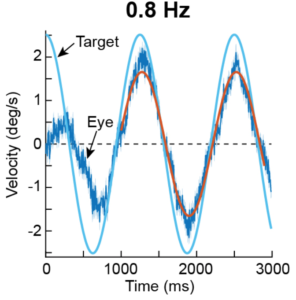 We have a new paper published in the Journal of Neurophysiology, and specifically in this journal’s special issue on the role of eye movements in perception, cognition, and action.
We have a new paper published in the Journal of Neurophysiology, and specifically in this journal’s special issue on the role of eye movements in perception, cognition, and action.
This is our lab’s third paper in this special issue of the journal!!
In this study, we tackled a class of small eye movements that is less well-studied. During fixation, microsaccades are separated by period of slow ocular drifts in eye position. The mechanisms underlying these ocular drifts are unknown. However, because these eye movements continuously move the retinal image, we need to understand them much more. After all, they have consequences on how we see the world.
We believe that understanding how these eye movements are controlled is an important first step towards understanding their functional implications on vision. This was certainly the case with our work on microsaccades: the insights that we gained from studying the neural mechanisms for microsaccade generation were, in our view, extremely instrumental for us to learn so much more about how they impact vision and attention.
As a first step towards understanding the control of ocular drifts, we characterized how well monkeys can track targets moving with very slow speeds and amplitudes. We presented sinusoidal motions of different frequencies (e.g. 0.8 Hz), and we characterized eye velocity during tracking. We then varied target motion frequency and amplitude, effectively taking a linear systems approach to characterizing the “frequency response” of the oculomotor system for small-amplitude slow motion trajectories.
 We found interesting properties of slow ocular tracking, which make us believe that the oculomotor system is capable of controlling ocular drifts. For example, the monkeys could still track targets with speeds that were as slow, or even slower, as those associated with the speeds of the eye during ocular drifts.
We found interesting properties of slow ocular tracking, which make us believe that the oculomotor system is capable of controlling ocular drifts. For example, the monkeys could still track targets with speeds that were as slow, or even slower, as those associated with the speeds of the eye during ocular drifts.
The paper is an important step towards uncovering the full neural mechanisms for controlling the entire gamut of fixational eye movements.
